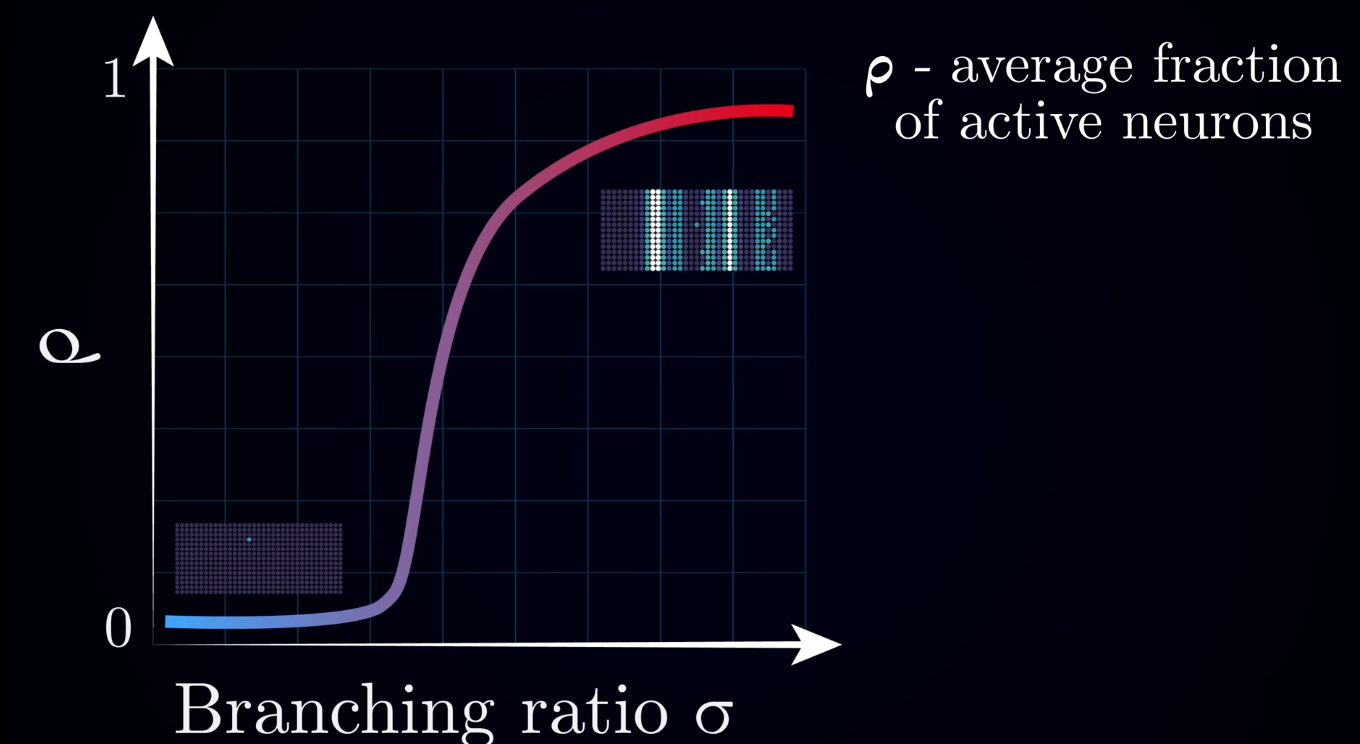Definition
Critical Brain Hypothesis
The Critical Brain Hypothesis states that the human brain operates at a critical point, delicately balanced between order and chaos, which optimises its computational efficiency and adaptability.
This state is characterised by properties such as power-law scaling in neural activity, suggesting a universal mechanism for neural dynamics akin to phase transitions observed in physical systems.
The hypothesis implies that deviations from this critical state could correlate with various neurological disorders, highlighting its potential importance in both brain functionality and disease.
Scale-Free Properties
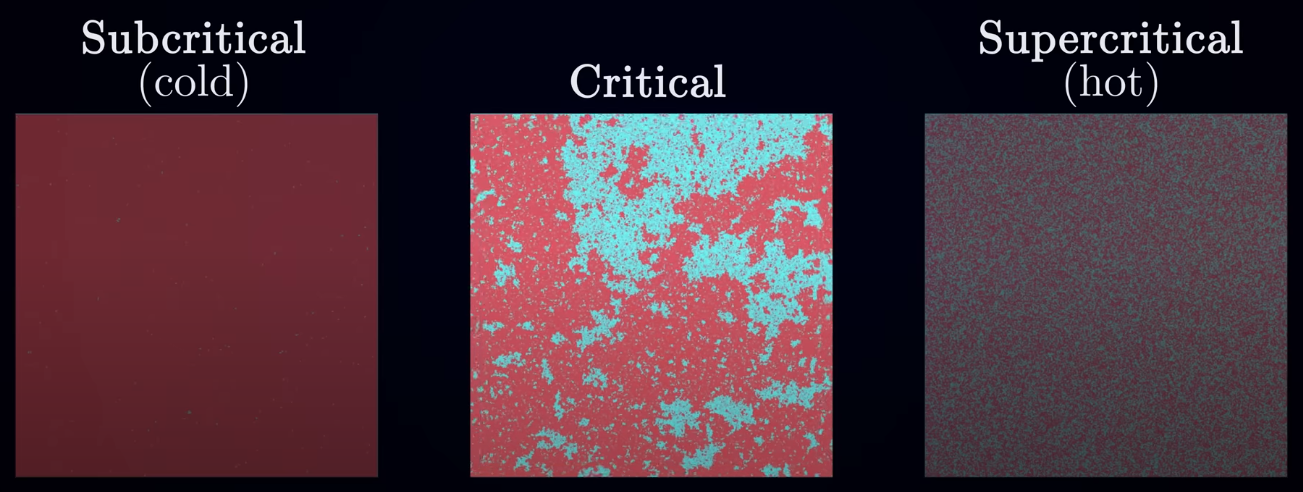
Scale-free or scale-invariant means that the pattern (in the middle, “Critical”) will repeat indefinitely as we zoom in or out, meaning:

Neural Avalanches
Local Field Potential (LFP) of a single electrode sometimes show characteristic waveform patterns:
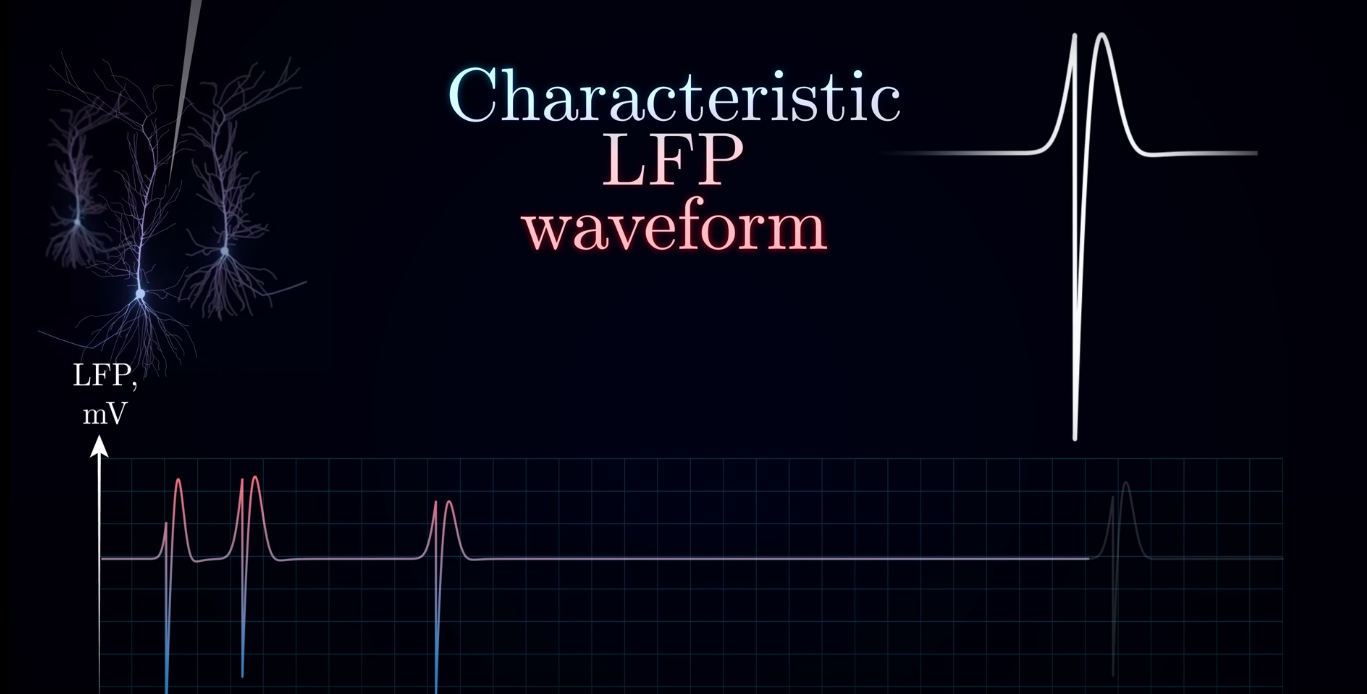
These events are considered discrete LFP events.
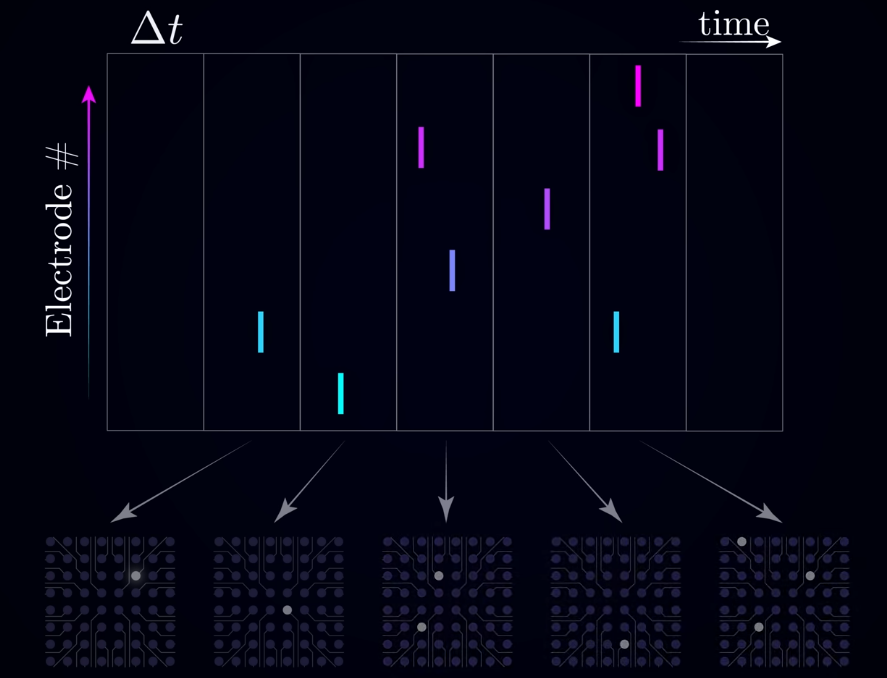
Neural Avalanches are some sort of waves, characterised by its:
- Duration and its
- Size (number of electrodes)
All neural avalanches are distributed according to a power law.
Branching Model
It is assumed that the LFP events are activation events of individual neurons.
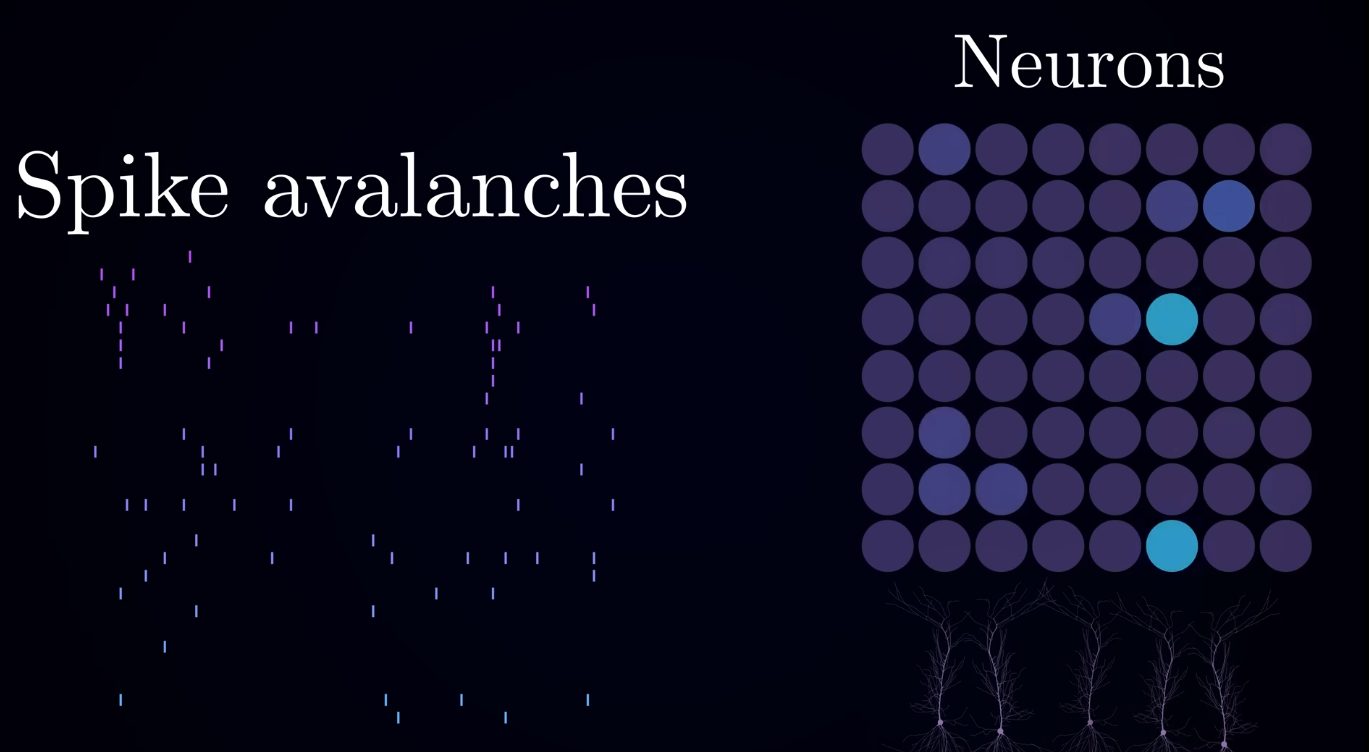
If a neural reaches its threshold voltage, it sends a signal to its downstream partners, increasing or decreasing their subsequent firing.
In this model, each neuron is connected to other neurons in a subsequent layer.

- Each connection has a probability for transmitting signals to its neighbours, denoted as . As soon as it receives a signal, the neuron randomly (according to ) transmits signals to its neighbours.
- Each neuron has a small probability to fire spontaneously.
The activity is controlled by the distribution of , where:
where is the branching ratio. Therefore, the value of controls the activity in the system:
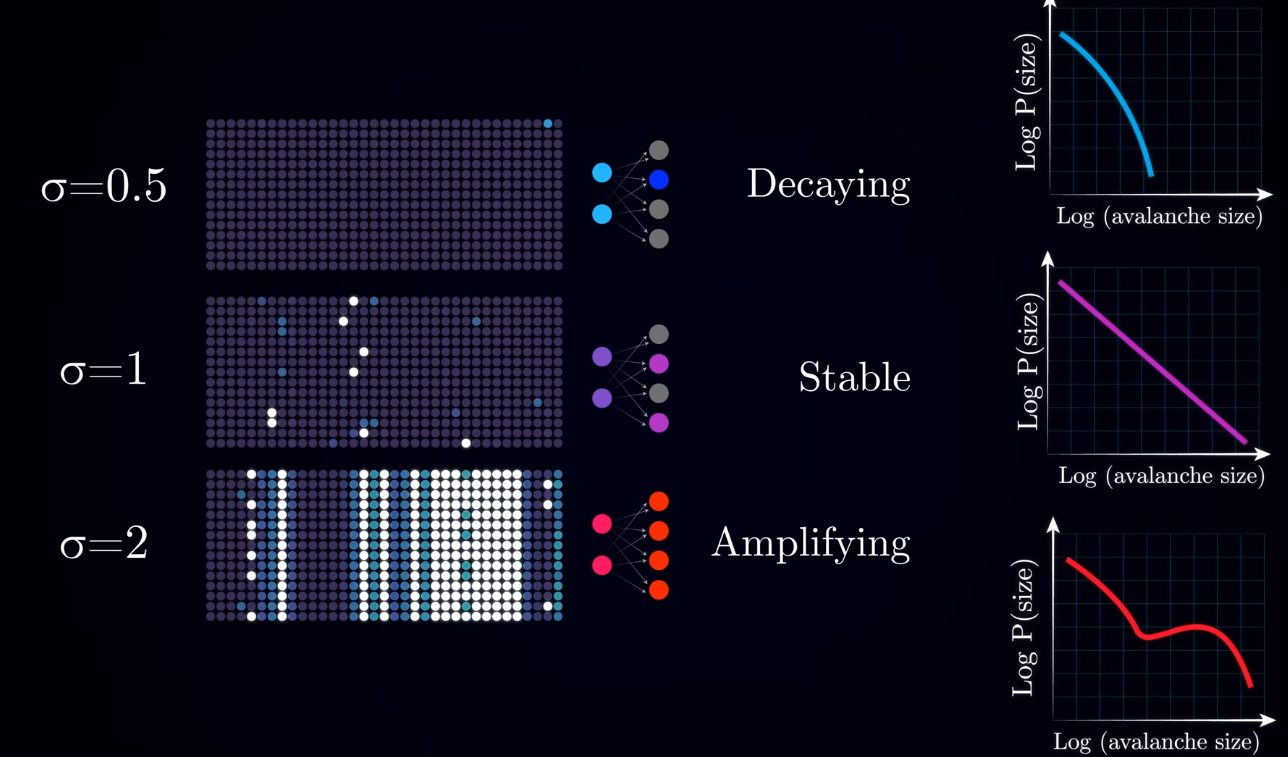
Hence, is the control parameter for the network which also shows the critical point:
